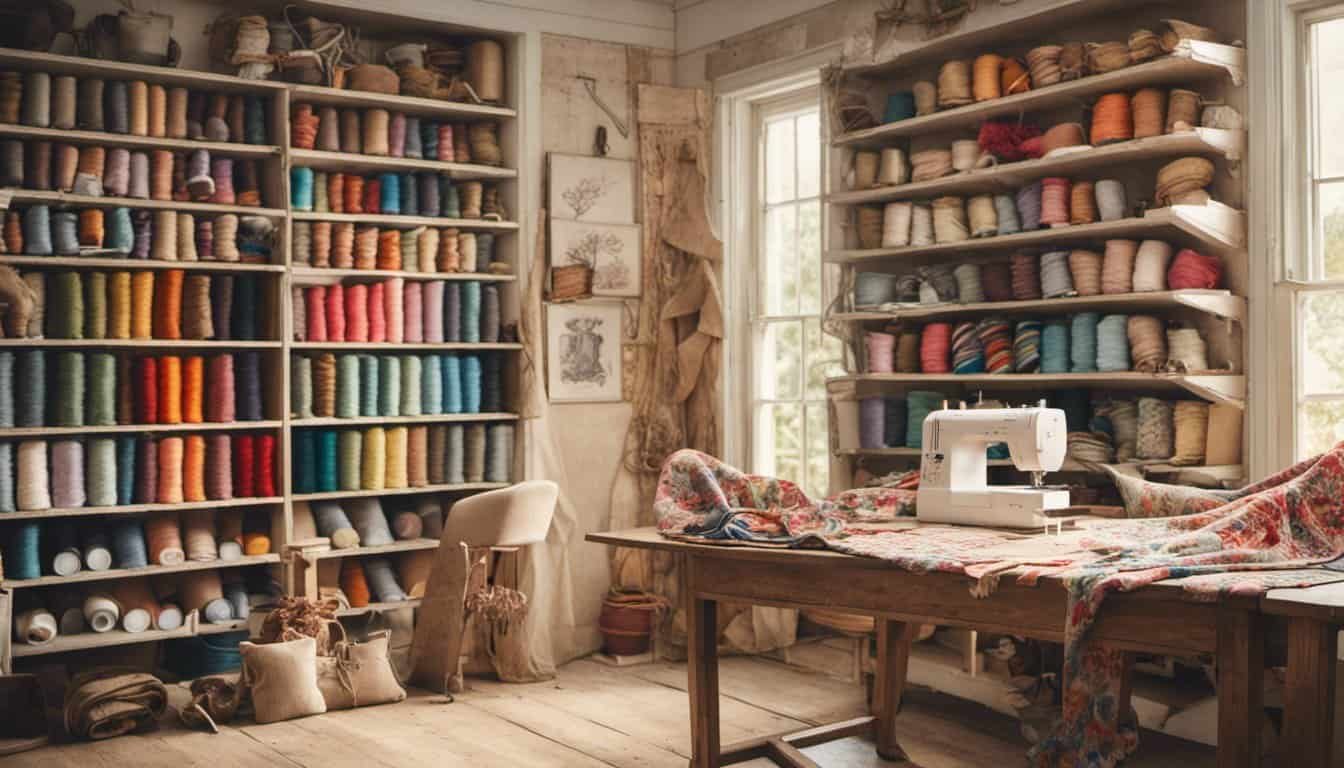Imagine slipping into a timeless tweed jacket that you crafted with your own hands. Sewing tweed might seem daunting, but with the right guidance, you can create a classic piece that exudes style and sophistication.
Whether you’re a seasoned sewist or just starting out, this guide will walk you through the essentials of working with tweed fabric. From selecting the right materials to mastering the stitching techniques, you’ll soon be ready to design a jacket that stands the test of time.
Selecting the Right Tweed Fabric
Choosing the appropriate tweed fabric ensures your jacket achieves the desired look and longevity. Start by identifying the type of tweed that suits your style and project needs:
- Harris Tweed: Handwoven in Scotland, known for durability and classic patterns.
- Irish Tweed: Lighter weight, often featuring vibrant colors and subtle textures.
- Brocade Tweed: Features intricate patterns woven into the fabric, adding depth to your jacket.
- Flannel Tweed: Soft texture, ideal for a comfortable and refined finish.
Consider the weight and texture based on the jacket’s intended use:
| Weight Category | Suitable For | Characteristics |
|---|---|---|
| Lightweight | Spring jackets | Breathable, soft drape |
| Medium | All-season jackets | Balanced warmth and structure |
| Heavyweight | Winter jackets | Enhanced insulation and durability |
Evaluate the color and pattern to match your style preferences:
- Solid Colors: Offer a versatile and timeless appearance.
- Herringbone: Provides a classic, sophisticated look with a distinct V-shaped pattern.
- Checkered: Adds a contemporary and dynamic flair to your jacket.
- Paisley: Introduces intricate designs for a unique and elegant touch.
Source quality fabric from reputable suppliers to ensure consistency and fabric integrity:
- Local Mills: Guarantee access to authentic regional tweeds.
- Online Retailers: Offer a wide range of options with detailed descriptions and reviews.
- Specialty Stores: Provide expert guidance and curated selections for specific projects.
By meticulously selecting the right tweed fabric, you lay the foundation for crafting a classic jacket that stands the test of time.
Essential Tools and Materials
Having the right tools and materials makes sewing a tweed jacket straightforward.
Tools Needed
- Sewing Machine: Use a heavy-duty machine to handle tweed’s thickness.
- Fabric Scissors: Sharp scissors ensure clean, precise cuts.
- Measuring Tape and Ruler: Accurate measurements are crucial for fitting.
- Pins and Needles: Quality pins prevent fabric distortion; universal needles work best.
- Iron and Ironing Board: Press seams and fabric sections for a professional finish.
Materials Required
- Tweed Fabric: Choose from Harris, Irish, Brocade, or Flannel tweed based on your design.
- Thread: Select polyester or cotton thread that matches the fabric’s strength and color.
- Lining Fabric: Lightweight materials like silk or rayon provide comfort and structure.
- Buttons and Fastenings: Durable buttons or snaps complement the jacket’s style.
- Interfacing: Stabilize collars, cuffs, and pockets to maintain shape.
Preparing Your Pattern
Preparing your pattern ensures a proper fit and structure for your tweed jacket. Follow these steps:
- Select a Pattern: Choose a jacket design that matches your style and skill level. Opt for patterns labeled for woven fabrics to accommodate tweed’s weight.
- Adjust for Tweed: Modify the pattern to handle tweed’s thickness. Add a 10% increase to seam allowances to prevent puckering during sewing.
- Position Pattern Pieces: Lay the pattern pieces on the fabric with the grainline parallel to the selvage. Pin each piece securely to avoid shifting while cutting.
- Marking Details: Transfer markings such as darts, buttonholes, and seam lines using tailor’s chalk or fabric markers. Ensure accuracy to maintain the jacket’s structure.
- Cutting the Fabric: Carefully cut along the pattern edges, following the marked lines precisely. Use sharp fabric scissors to achieve clean cuts without fraying.
By meticulously preparing your pattern, you set the foundation for crafting a classic tweed jacket that fits well and looks professional.
Cutting the Tweed Fabric
Accurate cutting ensures your jacket fits perfectly and maintains its structure. Begin by pre-washing the tweed to prevent shrinkage, using a gentle cycle and air drying. Iron the fabric to eliminate wrinkles, providing a smooth surface for cutting.
Tools You’ll Need
- Sharp Fabric Scissors: Ensure clean, precise edges.
- Rotary Cutter: Facilitates straight cuts, especially for layered patterns.
- Cutting Mat: Protects your workspace and maintains blade sharpness.
- Pins and Weights: Secure pattern pieces to the fabric without distortion.
Aligning the Pattern
Position pattern pieces on the fabric with the selvage edge running horizontally. Align grain lines accurately to maintain the jacket’s drape. Use pattern weights instead of pins for intricate tweed patterns, preventing fabric shifts.
Cutting Techniques
- Single Layers: Cut one layer at a time for simple patterns.
- Multiple Layers: Stack fabric layers evenly, matching pattern repeats.
- Curves and Angles: Follow pattern lines carefully, using sharp scissors to navigate tight corners.
Handling Pattern Matching
For patterns like herringbone or plaids, ensure motifs align seamlessly across seams. Examine each cut piece against the fabric’s pattern direction, adjusting placement as needed to maintain continuity.
Minimizing Waste
Plan your layout to maximize fabric usage. Nest smaller pattern pieces within larger ones, reducing excess scraps. Keep leftover fabric for potential adjustments or future projects.

By following these steps, you set a strong foundation for assembling a classic tweed jacket with precision and style.
Sewing Techniques for Tweed
Mastering sewing techniques tailored for tweed ensures a polished and durable classic jacket. Implement these methods to handle tweed effectively and join pieces with precision.
Handling Tweed’s Unique Texture
Tweed’s thick, woven texture demands careful handling to prevent puckering and distortion.
- Stabilize Fabric: Use a pressing cloth when ironing to avoid shine and preserve the fabric’s integrity.
- Use Sharp Tools: Sharp scissors and needles penetrate the dense weave, ensuring clean cuts and smooth stitching.
- Pin Strategically: Employ heavy-duty pins or clips to hold layers without leaving marks or shifting the fabric.
- Adjust Tension: Modify your sewing machine’s tension settings to accommodate the fabric’s weight, reducing the risk of skipped stitches or uneven seams.
- Employ a Walking Foot: A walking foot evenly feeds the fabric, maintaining consistent alignment and preventing bunching.
Joining Pieces Precisely
Accurate joining of tweed pieces guarantees a seamless and professional finish for your jacket.
- Match Patterns Seamlessly: Align patterns like herringbone or plaid at seams by carefully positioning fabric layers before stitching.
- Use Appropriate Stitches: Opt for a straight stitch or a small zigzag to accommodate tweed’s thickness, enhancing durability and flexibility.
- Reinforce Seams: Double-stitch high-stress areas such as armholes and button plackets to ensure longevity.
- Press Seams Flat: After sewing, press seams open with a low-temperature iron to maintain the jacket’s sleek appearance.
- Check Alignment Regularly: Continuously verify that edges and patterns align during assembly, making adjustments as needed to prevent misalignment.
Finishing Touches and Detailing
Installing the Lining
Attach the lining to the jacket’s interior by aligning the main pieces. Sew along the edges, ensuring smooth transitions. Match patterns precisely if using patterned lining fabric.
Adding Buttons and Buttonholes
« Never Fray Again! What Are Pinking Shears and When to Use Them
How Quilting Became an American Tradition: The Surprising History You Must Read »
Select sturdy buttons that complement the tweed fabric. Mark buttonhole placements accurately. Use a buttonhole foot on your sewing machine for clean, consistent openings. Sew buttons securely to withstand regular use.
Hemming the Jacket
Fold the jacket hems neatly and press them for a crisp finish. Use a double-fold hem for added durability. Sew the hems carefully, maintaining consistent width and alignment.
Incorporating Pockets
Choose pocket styles like flap, welt, or patch pockets. Position pockets evenly on the jacket front. Sew pocket openings precisely, reinforcing edges to prevent fraying. Ensure pockets lie flat against the fabric when closed.
Reinforcing Seams and Edges
Double-stitch high-stress areas such as armholes and pocket edges. Apply interfacing to stabilize neckline and collar areas. Trim excess threads to reduce bulk and enhance the jacket’s clean appearance.
Final Pressing
Press the entire jacket using an iron set to the appropriate temperature for tweed. Use a pressing cloth to prevent fabric shine or damage. Ensure all seams lie flat and details are crisply defined.

Attaching Fastenings
Install any additional fastenings, such as buttons on sleeves or decorative snaps. Align fastenings accurately with their corresponding closures. Sew attachments securely, checking functionality before moving forward.
Inspecting the Jacket
Examine all details for consistency and quality. Test buttonholes and closures for smooth operation. Make necessary adjustments to ensure the jacket meets your standards of craftsmanship.
By focusing on these finishing touches and detailing steps, you’ll achieve a polished, professional-looking tweed jacket that showcases your sewing expertise.
Conclusion
Crafting your own tweed jacket is a rewarding journey that blends creativity with skill. You’ve got the knowledge and tools to bring a timeless piece to life.
Enjoy the process and take pride in your handmade classic jacket. It’s a stylish addition that reflects your unique taste and dedication.


















